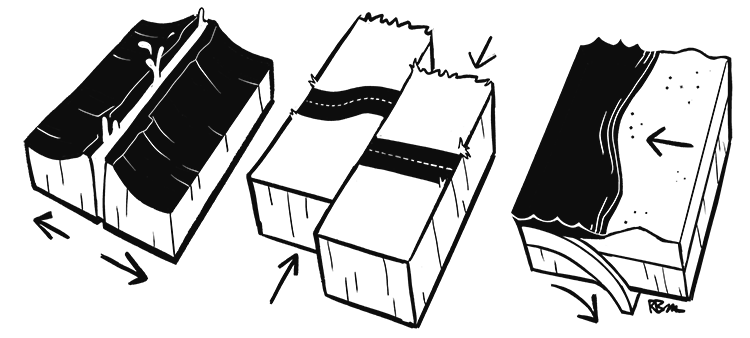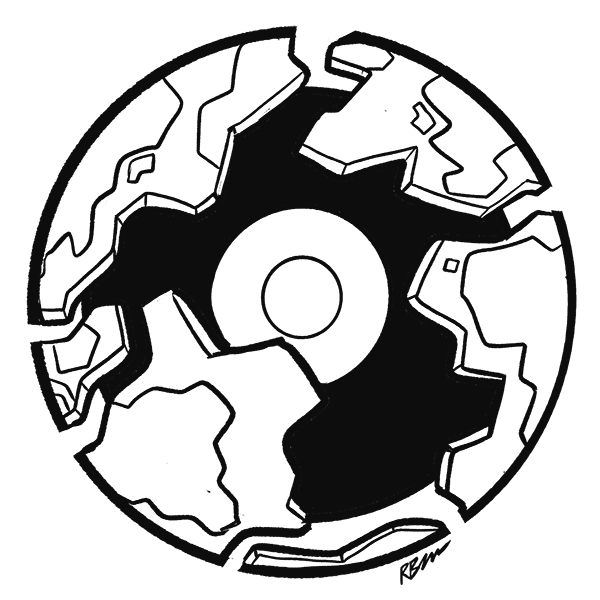Earth’s Big Puzzle
Have you ever tried to solve a jigsaw puzzle? It’s fun, right? Now, imagine our entire Earth is just like a huge jigsaw puzzle. This puzzle has big pieces and these pieces are called tectonic plates. But there’s something more interesting – these pieces of the puzzle are always moving, very slowly though, on a somewhat squishy layer underneath, known as the asthenosphere.
The heat from the center of the Earth makes this squishy layer move around. These movements push and pull the tectonic plates, causing them to move. When these plates meet each other or move apart, they can make mountains, cause earthquakes, or create volcanic activity!

Types of Plate Boundaries
There are three main types of places where these plate puzzle pieces meet and interact:
- Divergent Boundaries: This is when plates move away from each other. As they separate, hot molten rock (we call it magma) from beneath the crust comes up, cools down, and forms new crust. This is how underwater mountain ranges and volcanic islands are made.
- Transform Boundaries: Here, plates slide past each other sideways. This can cause lots of shaking and result in earthquakes.
- Convergent Boundaries: At these places, plates move towards each other. When a plate with an ocean meets a plate with land, it goes down into the deeper layers of the Earth in a process called subduction. This leads to the creation of volcanoes and mountain ranges.
The Power of Moving Plates
These moving puzzle pieces, or plate tectonics, play a huge role in shaping what the Earth looks like. They make the tallest mountains and the deepest parts of our oceans. They also cause earthquakes and make volcanoes erupt.
For example, the Himalayas, the highest mountains in the world, were created when the Indian Plate and Eurasian Plate bumped into each other. The San Andreas Fault in California, which is known for its earthquakes, is a place where plates slide past each other.

The Supercontinent: Pangaea
Now, let’s go on a time travel adventure to about 300 million years ago. All the continents we know today were all stuck together in one giant supercontinent called Pangaea. This is an important part of understanding plate tectonics.
Pangaea, which means ‘all lands’ in Greek, had all of Earth’s land in one place. But over millions of years, because of the slow movement of tectonic plates, Pangaea started to break apart.
The continents slowly drifted to where they are today, forming the world map we’re familiar with. This moving around of continents is known as continental drift, a theory that was first suggested by Alfred Wegener in 1912.
Why This Matters
Knowing about plate tectonics and the story of Pangaea helps us understand many things about Earth. It explains why continents that are far away from each other have similar fossils and why some places have more earthquakes than others.
Wrapping Up Our Earth Adventure
Plate tectonics tells us the story of our always-changing Earth, a story that’s written in the rocks beneath our feet. As we keep learning about this amazing process, we can better appreciate our planet’s past, present, and future.
